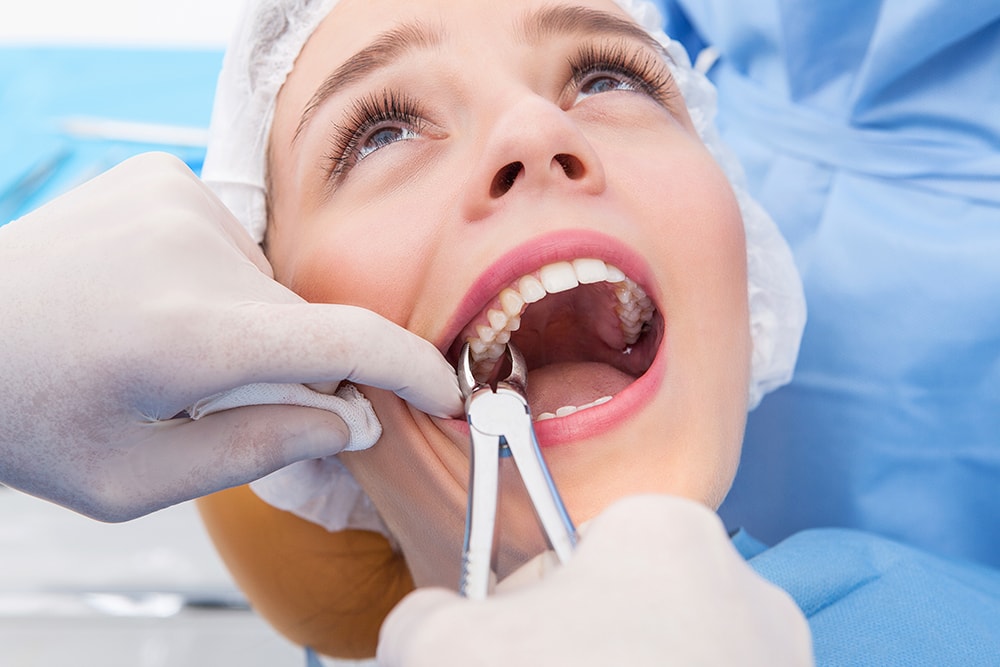Tooth Extraction: Cause and Treatment Options
One of the primary treatment goals in dentistry is to preserve teeth. Even the most advanced and lifelike prosthetic replacement can’t compare to a natural tooth for function, health and appearance.
There are times, however, when extracting a tooth might be in your best long-term health interest. If that happens there are effective methods to remove the tooth safely and efficiently, and with minimal discomfort.
Reasons to Extract a Tooth
Sometimes a tooth must be extracted because it is no longer healthy enough to function effectively, or it poses a danger to other teeth or your overall dental health. In some cases, the tooth has decayed too greatly to remain vital, or the gum tissues that hold it in place have detached because of progressive periodontal (gum) disease. In other cases, the tooth’s long-term health has been compromised by traumatic injury.
A tooth may need to be removed because it endangers other teeth or interferes with jaw and bite function. For example, third molars—wisdom teeth—are prone to impaction, a condition in which the crown doesn’t emerge fully from the gums during eruption. Often in an abnormal position below the gums, an impacted wisdom tooth can press against the roots of adjacent teeth, damaging them. For this reason and their high susceptibility to gum disease, impacted wisdom teeth are often extracted to reduce current or future problems.
A dentist may also extract an otherwise healthy tooth to improve the success of orthodontic treatment. Misaligned teeth are moved into better positions with braces or similar orthodontic appliances; sometimes, though, there may be little to no movement space because of tooth crowding. A dentist may remove certain teeth to create this necessary space. The teeth most frequently extracted for this purpose are the first bicuspids (located behind the eyeteeth near the front of the mouth). Removing these teeth won’t result in a loss of function and the ensuing orthodontic treatment will create a cosmetically satisfying result.
See how much you can save with a dental savings plan.
Use our calculator below >
The Extraction Procedure
The extraction method used will depend on the type and location of the tooth, and whether any extenuating circumstances exist that could complicate its removal.
Before any extraction procedure, the dentist will perform a proper assessment and diagnosis of the tooth including its position in the mouth and any possible removal complications. This assessment will include recent x-rays and a complete medical history, including current prescription drugs that might interact with any anesthesia.
While some people are apprehensive about having a tooth removed, modern extraction techniques aided by anesthesia are pain-free with only mild to moderate discomfort for a few days after the procedure. In many cases, teeth with a straightforward removal path can be extracted with a minimally invasive technique known as simple extraction.
Teeth are held in place by the periodontal ligament, an elastic gum tissue that attaches to the teeth on one side with tiny fibers and to the jawbone on the other side in similar fashion. During a simple extraction the dentist carefully manipulates the tooth until the fibers release their grip on the tooth. Experienced dentists develop a feel for how the fibers disconnect, so the tooth usually comes loose without any extended effort or discomfort for the patient. Simple extractions are usually performed with local anesthesia or in combination with other sedation methods like inhaled anesthetic gas.
There are other situations, though, for which a simple extraction isn’t feasible: teeth with multiple roots without a straight removal path; impacted teeth; or teeth with brittle roots that could break apart during extraction. In these cases, a surgical extraction performed by an oral surgeon will be necessary, typically using heavier sedation methods like intravenous sedation or general anesthesia.
After an Extraction
What takes place after the extraction is just as important as the actual procedure itself. After controlling any bleeding, the dentist will more than likely fill the open socket with bone grafting material before suturing the gum closed. Because bone loss is likely to occur after a tooth extraction, a bone graft will encourage new growth and minimize any potential loss. This is extremely important if the patient eventually plans to replace the extracted tooth with a dental implant (which requires bone to support it) or to maintain bone health during orthodontic treatment.
The dentist will give you care instructions for keeping the site cleaned and maintained until the soft tissue heals. He or she may also prescribe anti-inflammatory drugs to relieve minor pain, which should subside in a few days.
Tooth extractions are one of the most common procedures in dentistry. Even so, your dentist won’t recommend an extraction unless it’s absolutely necessary—to treat a current health issue or to improve your future oral health.
If you must undergo an extraction, though, your dentist will endeavor to make sure the procedure and recuperation period is as comfortable and pain-free as possible. He or she will also prepare the extraction site for the future, so that your extracted tooth won’t mean a permanent loss to either function or appearance.

 Login
Login